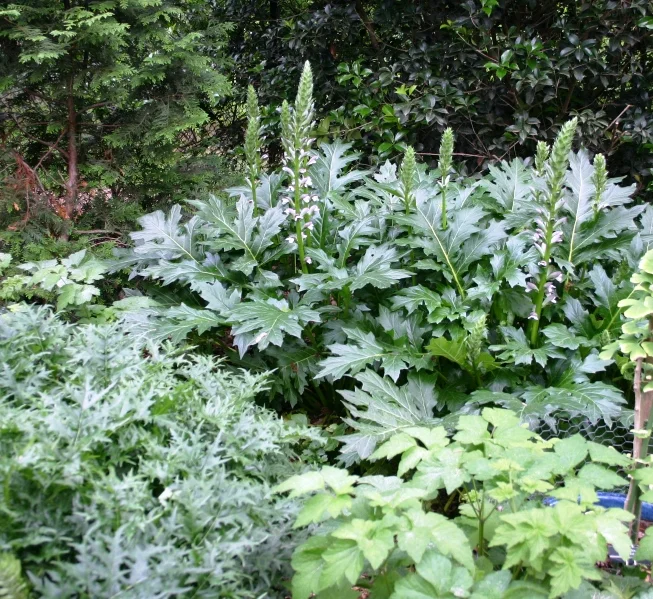One of my favorite plants for shade is Acanthus, (pronounced ah-KAN-thus) commonly called “Bear’s Breeches” for unknown reasons. There are two species available in nurseries, Acanthus mollis and Acanthus spinosus. See the accompanying photograph for a side-by-side comparison.
Both species have bold evergreen leaves that draw attention in the garden. When you see one in bloom, you cannot help but say, “Golly!” The leaves of mollis are large and shiny; the leaves of spinosus bristle with sharp spines. (Bet you saw that one coming, huh?). Leaf clumps may reach three feet tall. Bloom stems jump up to five feet or more. In the Mary Snoddy garden, the height of the bloom stem is a direct reflection of any irrigation I have thrown their way. The more water, the taller the stem. They do prefer a drier soil, however, so don’t get carried away with the watering. Ensure good drainage during winter to prevent root rot.
Acanthus’s distinctive leaves served as the pattern for carvings on classical Greek architecture. Blooms appear in early to mid summer on sturdy stems, white petals held by dusky purple bracts.
Acanthus are cold-hardy zone 7-10. They are evergreen in my zone 7b garden. Plants may spread by seed or by underground roots. I have seen reports of invasiveness on the internet, but have not experienced any such behavior in the ten-plus years I have enjoyed them. Deer, rabbits and voles avoid them.
Acanthus spinosus on left; Acanthus mollis on right.
Prickly Acanthus spinosus
Mary Snoddy and Acanthus mollis ‘Rue Ledan’



